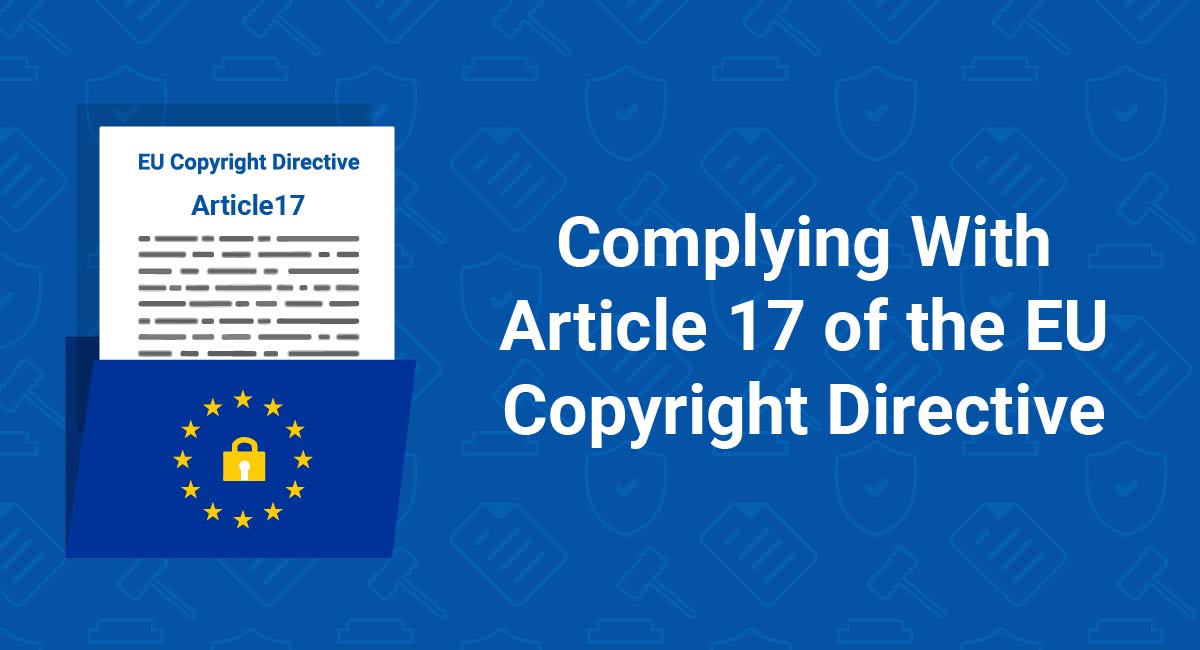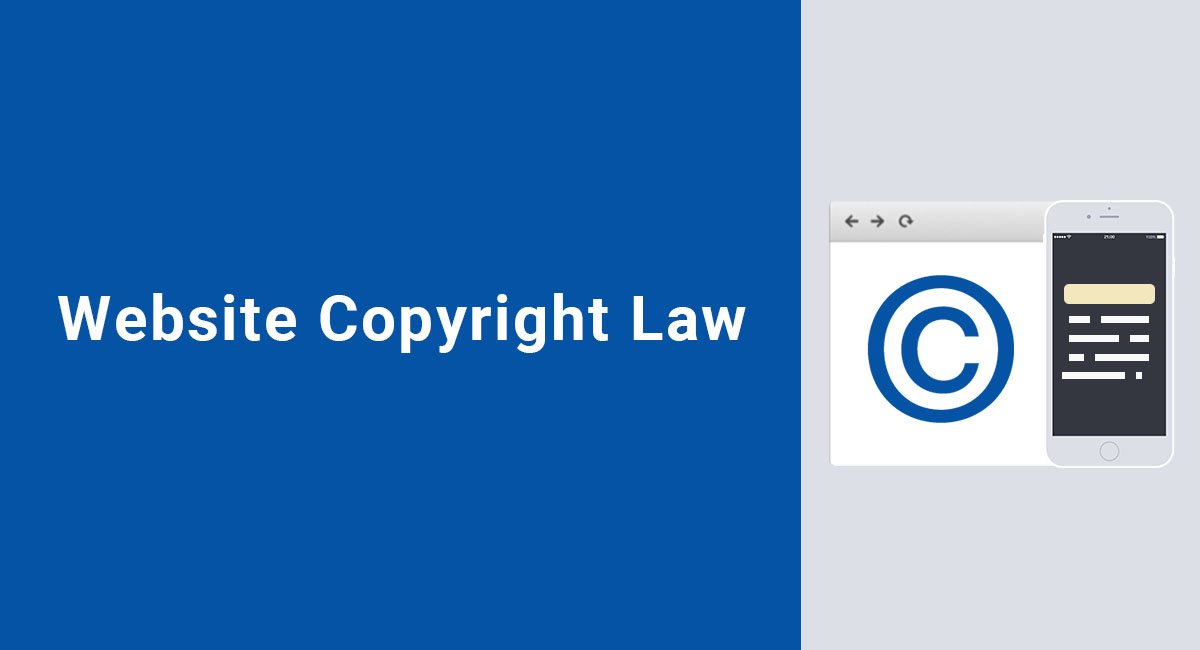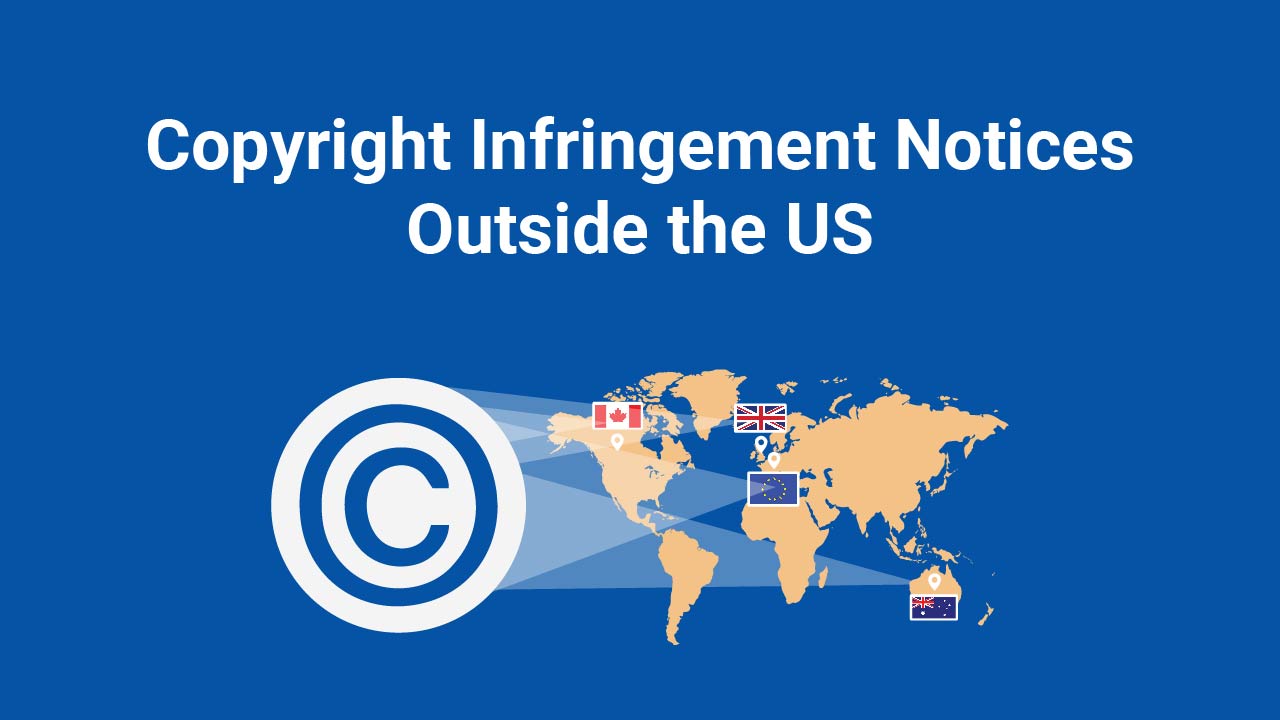Article 17 of the EU Copyright Directive (the Directive on Copyright in the Digital Single Market) is arguably the most controversial piece of legislation to pass through the EU Parliament in recent years.
The provision prohibits content-sharing platforms from displaying unlicensed copyrighted content on behalf of their users. It represents an unprecedented shift in liability for copyright infringement toward content-sharing platforms.
The Copyright Directive is EU law as of June 7, 2019. It has been subject to a lot of confusion and speculation.
We're going to look in-depth at the new rules under Article 17 and consider how your business can comply.
- 1. What is Article 17?
- 2. The Old Rules Under the eCommerce Directive
- 3. The New Rules Under Article 17
- 3.1. Can a Platform Escape Liability?
- 3.2. Do Platforms Have to Screen All Uploaded Content?
- 3.3. Do the Rules Apply to All Types of Content?
- 3.4. Are There Any Extra Protections for Users?
- 4. Who Must Comply with Article 17?
- 4.1. What is a Content-Sharing Platform?
- 4.2. Are Smaller Platforms Exempt?
- 4.2.1. Startups
- 4.2.2. Popular Startups
- 5. Applying the Rules to Your Platform
- 5.1. Make Best Efforts to Obtain Authorization
- 5.2. Set Up a Notice and Takedown Process
- 5.3. Set Up an Appeals Process
- 5.4. Modify Your Terms and Conditions
- 5.5. Prevent the Upload of Unauthorized Copyrighted Content
- 6. Summary
What is Article 17?
Article 17 of the EU Copyright Directive is the final version of what was previously called "Article 13." A lot of news and discussion on this topic refers to the provision by its old name.
The European Parliament hopes that Article 17 will:
"give artists a stronger position in invoking their rights for fair compensation when their work is used and distributed online by others."
Under Article 17, content-sharing platforms (such as YouTube and Vimeo) can be taken to court for making copyright-infringing content available to the public, even where it has been uploaded by their users.
Since these new copyright rules were proposed, Wikipedia has gone into "blackout" in protest and street demonstrations have drawn tens of thousands of people. However, Article 17 has been defended by publishers, authors, and musicians, who argue that it defends their intellectual property from internet giants.
EU countries have until 7 June 2021 to pass national laws that give effect to the Copyright Directive. Once this has happened, the rules set out under Article 17 will start being enforced by national courts in EU countries.
The Old Rules Under the eCommerce Directive

The old rules come from another EU law known as the eCommerce Directive. Under these rules, content-sharing platforms could not normally be sued for the unauthorized display of copyrighted content that had been uploaded by their users.
A content-sharing platform was defined as a "mere conduit" that simply received information from its users and provided access to it.
A platform's users were responsible for ensuring that the content they uploaded was not copyrighted, and the users could be taken to court by rights-holders. All a content-sharing platform needed to do to escape liability under the old rules was "act expeditiously" and take down the offending content, after receiving notice from the rights-holder.
This model of "notice and takedown" was applied quite inconsistently between EU countries, and was less strict than similar rules in the United States.
Article 17 provides a much narrower and more complex exemption.
The New Rules Under Article 17

It's important to understand how the rules under Article 17 operate. Then we'll look at how they might apply to your company.
Many of the questions you'll have about Article 17 can be answered by reading the text itself (also linked above). Translation from legalese will be provided. Remember that this is not legal advice.
The main purpose of Article 17 is to reduce the amount of unauthorized copyrighted material available online. This entails a requirement on content-sharing platforms to obtain authorization from the rights-holder, for example in the form of a license, before it displays copyrighted material uploaded by its users.
This license must cover situations in which its users are not seeking to make a profit.
Can a Platform Escape Liability?
If a content-sharing platform displays copyrighted material without a license, Article 17 tells us that the platform must demonstrate it has done certain things in order to escape liability.
There are four obligations that most content-sharing platforms must fulfill, shown here at Article 17 (4):

To avoid being liable for its users' content, a content-sharing service must be able to demonstrate that it has:
- Made best efforts to obtain a license
- Made best efforts to not to display any copyrighted content which has been registered with the platform by rights-holders
- Acted expeditiously to take down any copyrighted content on receipt of valid notice from the rights-holder
- Made best efforts to prevent the reupload of taken-down content
There are certain exceptions to some of these four obligations for smaller platforms, which we'll discuss in a later section.
Do Platforms Have to Screen All Uploaded Content?
It has been suggested that content-sharing platforms will have to impose an automated system that will scan each incoming item of content in order to filter out copyrighted material.
Some large content-sharing platforms already do this. For example, YouTube's Content ID program allows rights-holders to register copyrighted content with YouTube so that user-uploaded material can be scanned against it:

Article 17 (8) states there should be no "general monitoring obligation" imposed by the Copyright Directive. EU countries are, therefore, prohibited from requiring content-sharing platforms to scan all uploaded content.
However, scanning all uploaded content might be the only realistic way to comply with what we've labelled "obligation 2" (above). As we'll see, smaller platforms are exempt from this obligation. However, it is argued that even smaller platforms could resort to compulsory scanning due to fear of litigation.
Do the Rules Apply to All Types of Content?
Much of the outrage about Article 17 has focused on the notion that it would effectively ban memes.
The European Commission has been dismissive of this idea, as we can see from its Twitter feed:
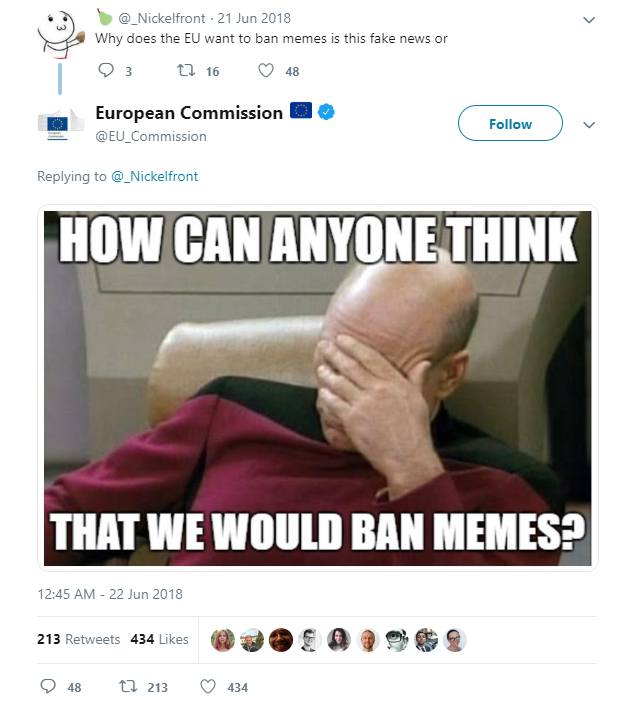
There are certain types of content that are exempted from the Article 17 rules that will be familiar to you if you understand the principles of "fair use" or "fair dealings" in copyright law:
- Quotation, criticism, review - Such as movie reviews and certain educational content
- Caricature, parody, pastiche - Such as memes and satire
This exception should go some way to reassure those who believed that Article 17 would serve to "ban memes" in the EU. However, some still argue that the new rules will cause content-sharing platforms to be so vigilant in screening user-uploaded content that memes could effectively disappear.
Are There Any Extra Protections for Users?
Article 17 requires that content-sharing platforms provide an "effective and expeditious" appeals process for users whose content has been taken down. All appeals must be reviewed by a human (ie not by automated software).
Content-sharing services must also use their Terms and Conditions to let users know about the exceptions to the rules on using copyrighted material, such as for critique and parody.
Who Must Comply with Article 17?

The new rules don't affect every company. They also apply differently to different types of platforms.
What is a Content-Sharing Platform?
Article 17 is explicitly aimed at "online content-sharing service providers" (which we're calling "content-sharing platforms"). These are defined at Article 2 of the EU Copyright Directive:

At face value, this describes an online service (eg a website or app) whose users upload "a large amount" of copyrighted content. As part of its main business activities, the platform:
- Stores this copyrighted content
- Provides public access to the content
- Organizes and promotes the content for profit
Specific exceptions mentioned in Article 17 include:
- Not-for-profit encyclopedias and research depositories (eg Wikipedia)
- Open-source software development platforms (eg GitHub)
- Online marketplaces (eg eBay)
- Telecommunications networks (eg ISPs such as AT&T or O2)
- Private or B2B cloud storage services (eg DropBox)
Are Smaller Platforms Exempt?
Outside of the exemptions listed above, the rules affect all for-profit content-sharing platforms. Smaller platforms are not exempt. But some platforms will be held to less strict standards.
This extract from Article 17 tells us how the rules can be applied differently to some platforms:

We can distinguish two types of content-sharing platform for which the rules apply less strictly. We'll call these "Startups" and "Popular Startups."
Startups
Startups are (for our purposes) content-sharing platforms that:
- Have been operating publicly in the EU for less than three years, and
- Have a turnover of less than €10 million per year, and
- Received, on average, fewer than 5 million visitors per month throughout the previous calendar year
Above, we looked at the four obligations that a content-sharing platform will need to fulfill before it can escape liability for the user-uploaded content it displays.
Startups are exempt from obligations 2 and 4. To escape liability, Startups only need to comply with obligations 1 and 3, by showing that they have:
- Made best efforts to obtain a license
- Acted expeditiously to take down the content following notice from the rights-holder
Popular Startups
Popular Startups are the second category of content-sharing platform distinguished by Article 17.
Popular Startups are just like Startups in terms of age and turnover. The only difference is that they received, on average, more than 5 million visitors per month throughout the previous calendar year.
Popular Startups have the same obligations as Startups (obligations 1 and 3).
Additionally, Popular Startups need to demonstrate that they have made "best efforts" to prevent reuploads of unauthorized copyrighted material that has been taken down after notification from the rights-holder (obligation 4).
This means that Popular Startups are only exempt from obligation 2.
Applying the Rules to Your Platform

These new rules are likely to substantially change the way content-sharing platforms operate.
Whilst the Copyright Directive has been passed at EU level, platforms have some time to prepare before the rules come into national law. If you make the most of this opportunity, you could earn a competitive advantage.
Make Best Efforts to Obtain Authorization
The most basic premise of Article 17 is that a content-sharing platform must not display copyrighted material that has been uploaded by its users without authorization from the rights-holder. If a platform breaches this rule, it may be liable for copyright infringement.
This obligation applies to all types of content-sharing platform, including Startups and Popular Startups.
What does this mean in practice?
Ultimately, it will involve negotiations with rights-holders to obtain licenses. This could be particularly problematic for smaller companies.
Currently, YouTube offers rights-holders an opportunity to share ad revenue with the uploader of their material:
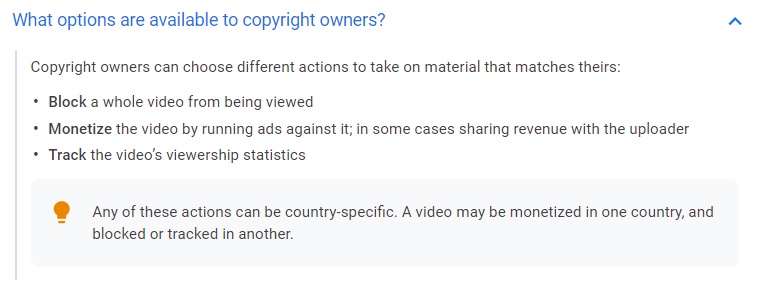
The balance of power has now tipped towards rights-holders. Such an arrangement might no longer be sufficient.
If you do display unauthorized, copyrighted material on your platform, you must be able to show that you have made "best efforts" to obtain authorization. "Best efforts" has not yet been clearly defined.
Article 17 contains the following provision:

This states that the European Commission will be consulting to establish best practice. This should help clarify how the authorization system will work.
For now, you should keep an eye on the European Commission's press releases to see how these consultations develop.
Set Up a Notice and Takedown Process

If a platform has made unauthorized copyrighted material available to the public, it must "act expeditiously" to remove the content following "substantiated notice" from the rights-holder.
This obligation applies to all types of content-sharing platform, including Startups and Popular Startups.
Such obligations already exist in some places, for example under the US Digital Millennium Copyright Act (DMCA).
Here's how YouTube facilitates its notice and takedown process:
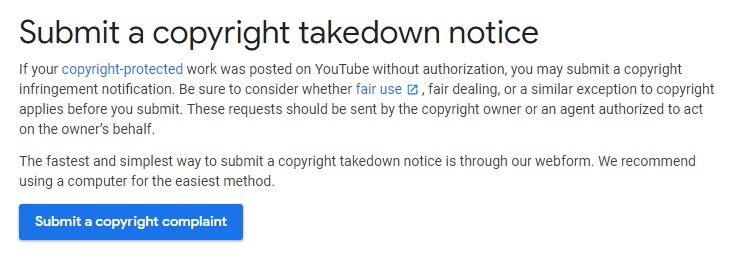
Selecting "Submit a copyright complaint" allows the rights-holder to complete a copyright complaint form:
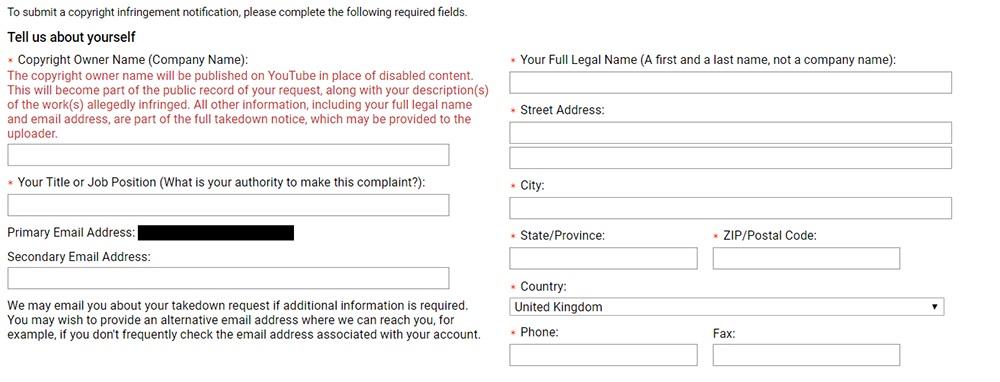
The the rights-holder must make a declaration before submitting their request. This helps ensure that copyright complaints are substantiated (valid):

It's in your interests to make it easy for rights-holders to give you notice. But you must only take down content where you can be sure that such notice is substantiated.
Set Up an Appeals Process
Article 17 mandates an "effective and expeditious" appeals process for users who wish to dispute a takedown notice. Appeals must be subject to human review.
This obligation applies to all types of content-sharing platform, including Startups and Popular Startups.
As part of their notice and takedown procedures, many platforms already allow users to bring a "counter-notification." This is required under the DMCA.
TikTok's Terms of Service describes the process for bringing a counter-notification:
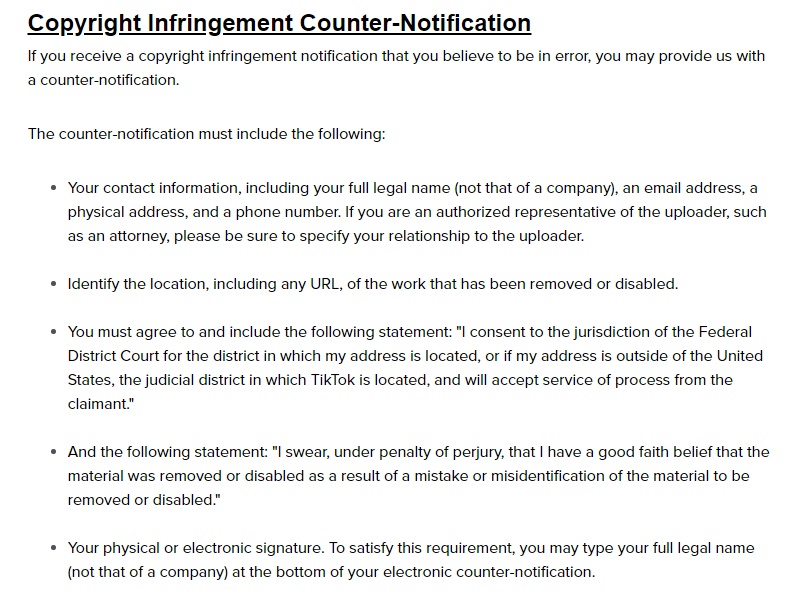
Here's another example from Quizlet:
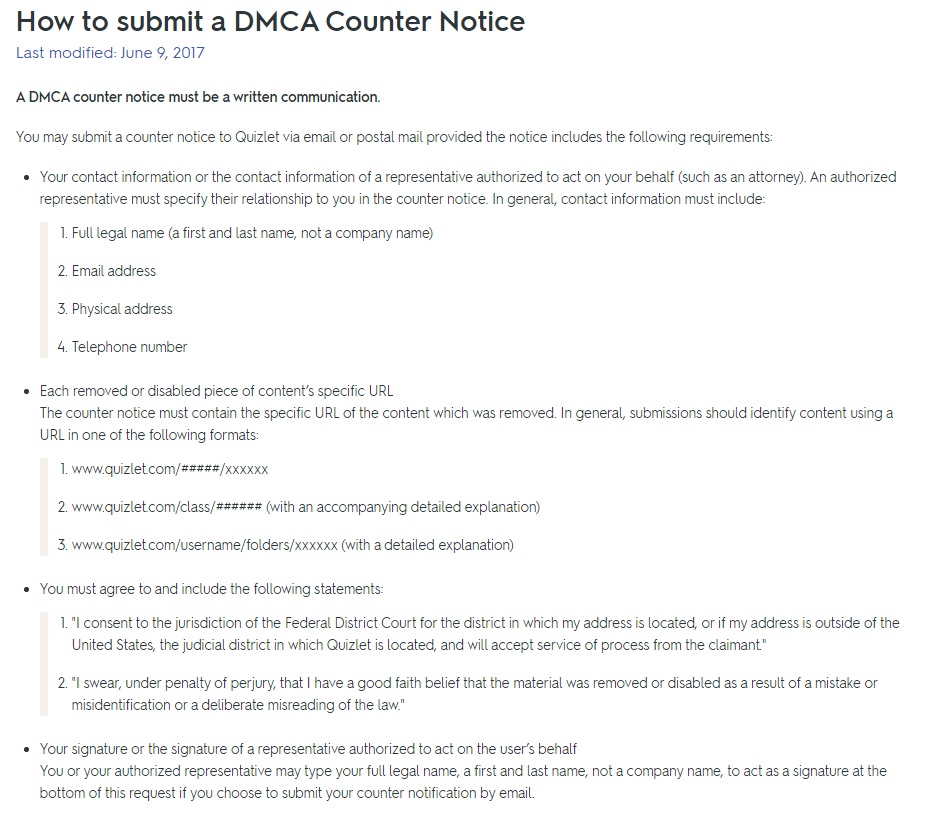
These counter-notification processes are specific to the requirements of the DMCA. An Article 17 appeals process could look quite different. Hopefully some clarification will emerge from the European Commission in due course.
Modify Your Terms and Conditions

Hopefully, your platform already has a set of Terms and Conditions (sometimes called "Terms of Service" or "Acceptable Use Policy"). If not, you should create one as a matter of urgency.
Your Terms and Conditions should prohibit users from uploading copyrighted material without a license.
Here's how Vimeo handles this. First, Vimeo states its broad approach to copyright in its Terms of Service:

Vimeo's terms incorporate a distinct Copyright Policy:

Article 17 requires platforms to inform users about exempted content via their Terms and Conditions. This obligation applies to all types of content-sharing platform, including Startups and Popular Startups.
Vimeo provides some guidance for its users about fair use. Here's what Vimeo has to say about the use of copyrighted material for parody (one of the Article 17 exemptions):
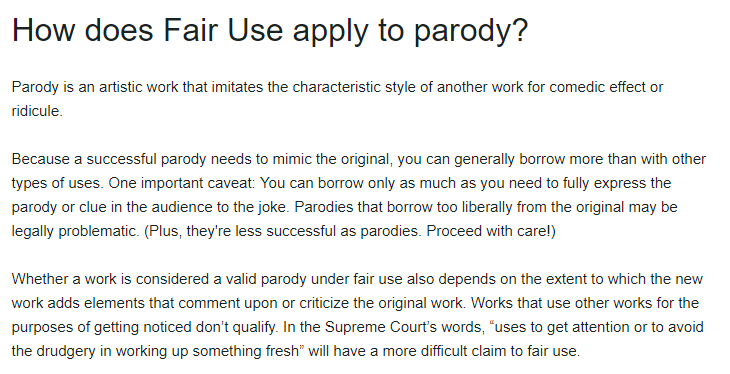
To comply with Article 17, you should ensure that such guidance is incorporated into your Terms and Conditions.
Prevent the Upload of Unauthorized Copyrighted Content
What we've labeled "obligation 2" is one of the more controversial provisions of Article 17. It does not apply to either Startups or Popular Startups.
Obligation 2 envisions a system of pre-emptive notice. Rights-holders will register their content with content-sharing platforms. Platforms will need to either:
- Obtain authorization to display the registered content, or
- Prevent the registered content from being displayed
If a platform makes registered content available to the public, it could be liable for copyright infringement unless it can show that it has made "best efforts" to do the two things above.
"Obligation 4" imposes a similar requirement. Platforms must prevent the re-upload of content that has been taken down after notice from the copyright holders. This obligation does not apply to Startups, but it does apply to Popular Startups.
One option for complying with these obligations might be to implement something like YouTube's Content ID system (discussed above) or some less rigorous mechanism such as the Copyright Match Tool:
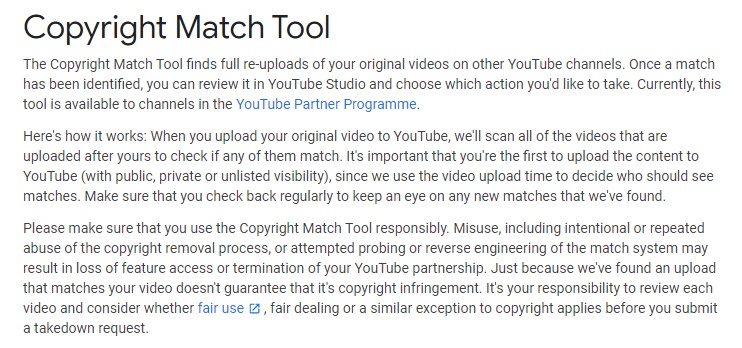
However, as we've discussed, platforms are ostensibly not required to monitor all incoming content. So there may be some flexibility in how these rules are enforced.
According to Article 17 (9), platforms must also be mindful of the General Data Protection Regulation (GDPR) when applying these rules:

Balancing the interests of rights-holders and users has always presented a challenge for content-sharing platforms. Article 17 is set to complicate matters further.
Summary
Article 17 will lead to some significant changes online. It's no surprise that companies such as YouTube lobbied ferociously against the rules. But smaller platforms will also be seriously affected.
Before the new rules are enforced, you can prepare by doing the following:
- Consider how the law applies to your business
- Set up a notice and takedown process
- Set up an appeals process
-
Ensure your Terms and Conditions agreement includes information about:
- Copyright violation
- Exempted content
-
Consider how you can:
- Obtain authorization from rights-holders
- Prevent unauthorized sharing of copyrighted content

Comprehensive compliance starts with a Privacy Policy.
Comply with the law with our agreements, policies, and consent banners. Everything is included.
